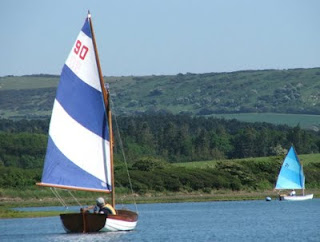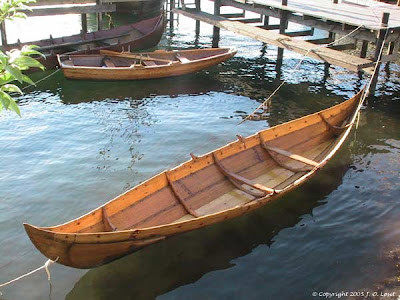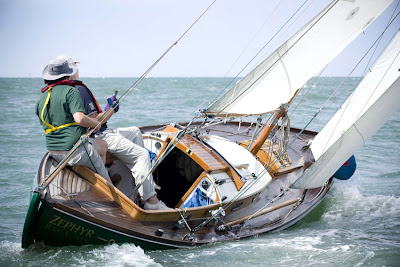
Designed by Michael Storer
Robert tells the story as follows, "Even before 2000, my brother found on the internet an interesting and simple in construction, sailing canoe modeled on traditional sailing canoes from 1870, American sharpies and famous American boat designer Phil Bolger's influences. A boat so pleased him that soon he made contact with the Australian designer Michael Storer and bought the plans. He was going to build it, but life turned out differently. Ever since my brother showed me BETH's building plans, she liked at first sight to me also - with its elegance and simplicity, as well as the expected features of the sailing.

A few years later my brother gave me BETH's plans to build. In April 2009, build began my sailing canoe in my tiny garage. The whole time I was by Internet in contact with Michael Storer, who on his forum and private gave me some useful advices. The boat was a really inexpensive and simple to build. Building was possible singlehanded and using a very modest set of tools. After several months, just before the onset of cold weather definitive construction was interrupted for the winter, and then resumed in April 2010.

My BETH Sailing canoe was launched May 28, 2010 in Gdansk (Gorki Zachodnie), where it took part in the Raid Poland 2010. She obtained the name "YuanFen" (Chinese - a force that brings people together) but the variable and uncertain weather and the experience and common sense meant that BETH “YuanFen” did not emerge over the Gulf of Gdansk.
From June 2010 to the end of August I'have tested it on a little lake (Jezioro Dziekanowskie) near my house. She proved a fast boat and pleasant sailing. Is the boat for the experienced sailor, but the hull is relatively more stable than the other canoe hulls. She is easy to maneuver on land it singlehanded and easy for trailering and roofracking. She draws attention to its characteristic appearance and speed - she is the attraction of the waters which she will be on.
I am grateful to the designer Michael Strorer for such a beautiful design and for his advice and comments, which I gladly gave during construction, as well as my brother, for showing me BETH and transmission plans, including the right to build her.
I have serious plans to continue to use my sailing canoe BETH "YuanFen" - I intend to test it to a larger water body, and prepare for the trip (in 2012) from the Poland to Danish island Bornholm - about 70 nm open Baltic Sea. This requires preparation and common sense - good and stable weather is essential. I believe this is possible, but always keep in mind that this is just a tiny canoe."

Beth has a delightful simplicity and elegance, a perfect boat for getting out and enjoying being on the water, equally as many intrepid Victorian sailors were to demonstrate these small craft can make remarkable voyages. We look forward to hearing more on Robert's open water voyage on the Baltic.


































